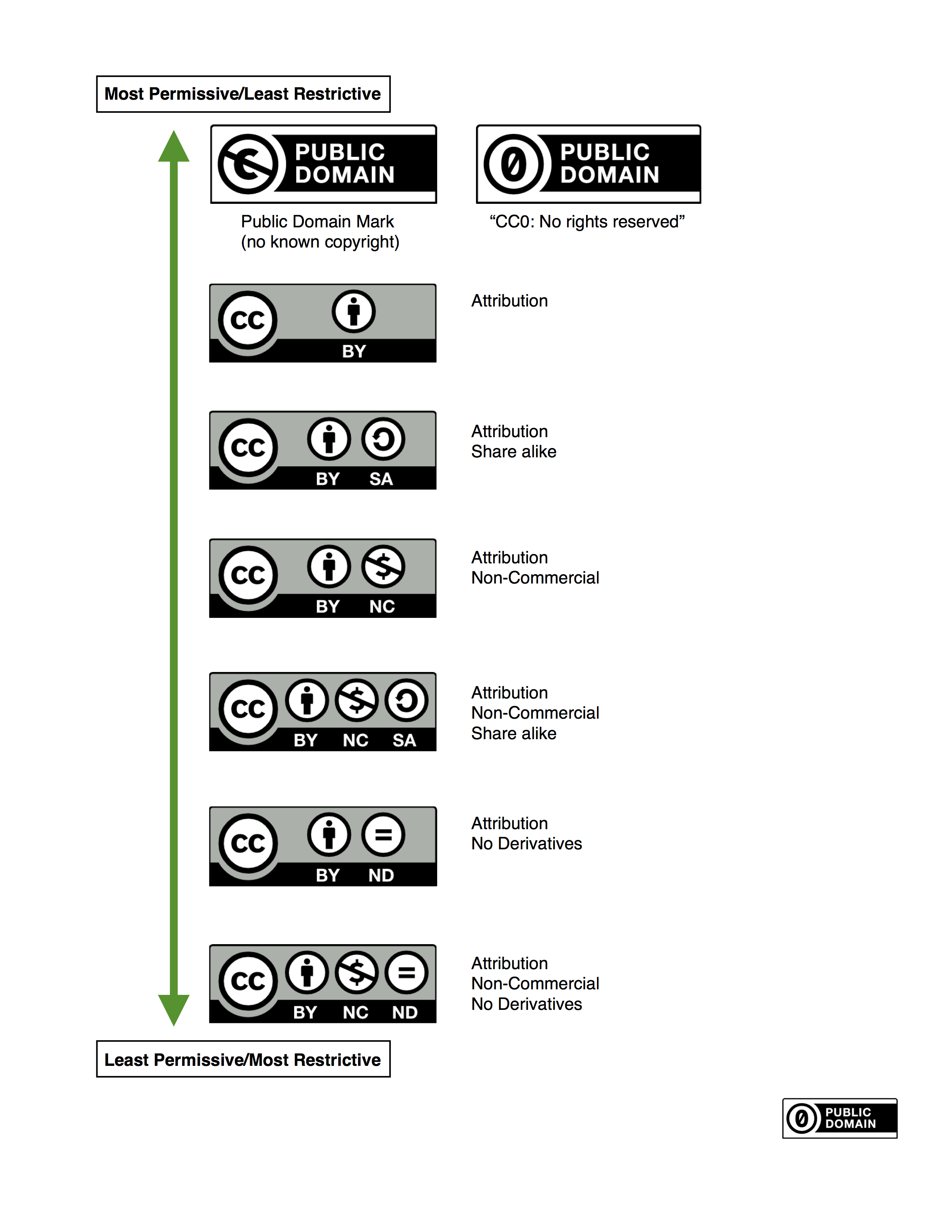-
Reading Round Up
Back to top of pageHere’s what we have been reading lately in EdTech: The Death of the Digital Native
In these four provocations, anthropologist Donna Lanclos argues that the notion of the “digital native” is bogus and disempowering, that pandering to student expectations can backfire, universities should be open by default, and our attitude to educational technology needs a rethink.
Five Types of Quizzes That Deepen Engagement with Course Content
a Faculty Focus article offering innovative ways to set quizzes.
Open Source Math Software Competes in the Classroom
William Stein is Professor of Mathematics at the University of Washington,and founder of the SageMath software project discusses the software’s advantages
The Digital Campus: Tech Innovators 2016
Digital movers and shakers—nine projects using educational technology
Want to share an article you enjoyed? Please post a link in the comments below.

-
Creative Commons Workshop at KPU: A conversation with Paul Stacey
As part of Open Education week, I recently attended a workshop at Kwantlen Polytechnic University with Paul Stacey, Associate Director of Global Learning at the non-profit organization Creative Commons. Previously at SFU and BC Campus, Paul has been instrumental in driving the adoption of OER (Open Educational Resources) in the BC post-secondary sector. Rather than give a traditional presentation, Paul adopted a more informal question and answer session with approximately thirty workshop participants. He started by explaining what Creative Commons licenses are and stressed they are still a form of copyright attached to a creative work. The difference between “all rights reserved” copyright and Creative Commons licenses is that under the latter the author stipulates a set of permissions so that others can use a creative work in certain ways under certain conditions. Unlike “all rights reserved” copyright, Creative Commons licenses are “some rights reserved:” they allow creativity while ensuring the author retains ownership rights over the work. The licenses themselves are best thought of as being on a ‘permissiveness’ continuum from the most permissive and open (Public Domain marks and CC BY – Attribution) through to the least permissive (CC BY NC ND). Paul, along with organisations like JISC, advocates for the use of CC BY wherever possible. The different licenses themselves are explained very well on the Creative Commons website. There is also a great License Chooser Tool if you are unsure which license to use. Although earlier versions of CC licenses were country/region specific, the new version 4.0 can be applied globally regardless of geographical location.Back to top of page Paul went on to demonstrate some real-world examples of the licenses in practice. The Librivox Free Audiobook Collection provides free audio recordings of books in the public domain. Similarly German-Japanese pianist Kimiko Ishizaka’s interpretation of Bach’s Open Goldberg Variations has been made available under a CC0 (zero) Public Domain license, meaning that any use can be made of the work without even the need for attribution. CC BY (Attribution) licenses are used by the OpenStax Textbook project and CC BY SA (Attribution, Share-alike) is used by Wikipedia. The board game Cards Against Humanity uses CC BY NC SA, online journal The Conversation uses CC BY ND and an example of the least permissive CC BY NC ND license is provided by the Teach AIDS website.
Openly licensing educational content has many benefits. Paul mentioned some of the more obvious ones such as the cost-savings to students of faculty adopting an open textbook, or the higher quality resources resulting from a collaborative peer authoring and review process. Beyond this, however, it is important to remember the core values of education that open educational practices support. Sharing and building on the ideas of others is fundamental to public education, as are academic freedom and innovation in teaching practice. Open textbooks, for example, increase academic freedom by taking control away from publishers and putting the potential to re-purpose and re-mix directly in the hands of faculty and students. Think, for example, of the exciting opportunities that exist to adapt textbooks for local contexts and update the content more regularly than traditional textbooks. Or think of the pedagogical innovations that might occur when we invite students to co-produce a classroom text?
Finally, Paul covered some important considerations when starting out with OER and open textbooks at an institution. Make sure you adopt a bottom-up as well as top-down approach, i.e get both senior management and faculty/student buy-in. Have a look around to see what exists already – at Langara, for example, we already have faculty in Physics and Math using open textbooks with their students; we’re not starting from scratch. Think about how OER will be stored, curated and distributed/shared. And have a clear institutional strategy that involves as many internal stakeholders as possible, while taking advantage of the ever-expanding wealth of resources and networks that are available in the open education space.
Julian Prior (Educational Technology Advisor)
Paul went on to demonstrate some real-world examples of the licenses in practice. The Librivox Free Audiobook Collection provides free audio recordings of books in the public domain. Similarly German-Japanese pianist Kimiko Ishizaka’s interpretation of Bach’s Open Goldberg Variations has been made available under a CC0 (zero) Public Domain license, meaning that any use can be made of the work without even the need for attribution. CC BY (Attribution) licenses are used by the OpenStax Textbook project and CC BY SA (Attribution, Share-alike) is used by Wikipedia. The board game Cards Against Humanity uses CC BY NC SA, online journal The Conversation uses CC BY ND and an example of the least permissive CC BY NC ND license is provided by the Teach AIDS website.
Openly licensing educational content has many benefits. Paul mentioned some of the more obvious ones such as the cost-savings to students of faculty adopting an open textbook, or the higher quality resources resulting from a collaborative peer authoring and review process. Beyond this, however, it is important to remember the core values of education that open educational practices support. Sharing and building on the ideas of others is fundamental to public education, as are academic freedom and innovation in teaching practice. Open textbooks, for example, increase academic freedom by taking control away from publishers and putting the potential to re-purpose and re-mix directly in the hands of faculty and students. Think, for example, of the exciting opportunities that exist to adapt textbooks for local contexts and update the content more regularly than traditional textbooks. Or think of the pedagogical innovations that might occur when we invite students to co-produce a classroom text?
Finally, Paul covered some important considerations when starting out with OER and open textbooks at an institution. Make sure you adopt a bottom-up as well as top-down approach, i.e get both senior management and faculty/student buy-in. Have a look around to see what exists already – at Langara, for example, we already have faculty in Physics and Math using open textbooks with their students; we’re not starting from scratch. Think about how OER will be stored, curated and distributed/shared. And have a clear institutional strategy that involves as many internal stakeholders as possible, while taking advantage of the ever-expanding wealth of resources and networks that are available in the open education space.
Julian Prior (Educational Technology Advisor)
-
Video and Multimedia in Education
Back in 2008 the NMC/Educause Horizon Report stated “video is everywhere”1 in recognition of the transformative effects that the availability of relatively cheap and easy to use tools to edit and create video were having on teaching and learning. Fast forward seven years and we are continuing to witness the rapid growth of video and interactive multimedia in higher education as the success of platforms such as iTunes U, Khan Academy, Lynda.com and TEDx demonstrates. Our students—labelled by some the “Netflix generation” 2—are coming to Langara with heightened expectations of the role that multimedia should play in the learning lifecycle, from recruitment and course design to content delivery, assessment and feedback. They are equally aware that to succeed in the digital economy they need to demonstrate competence in using multimedia to communicate and collaborate effectively. Being digitally literate requires much more than simply being able to use a word processor or a spreadsheet programme. This presents new challenges to instructors who perhaps are not always as comfortable as students are working with digital media. They may be understandably sceptical of the idea that binge-watching Netflix translates particularly well to the higher education environment where academic rigor, critical thinking and deep learning are prerequisites for student success. Even if instructors are convinced of the potential of video to enhance student engagement they may have questions about what makes for a compelling video, what the optimum length of a video should be, or how best to distribute it to their students. In my role as Educational Technology Advisor (Multimedia Specialist) I work with instructors to help answer these questions and assist them in developing the confidence to use, create and share multimedia in their teaching. Using multimedia effectively requires careful planning, an understanding of the importance of accessibility and an awareness of the myriad ways that it can support academic innovation. My job is to help instructors navigate through the potentially bewildering array of applications of multimedia to learning, whether that be screencasting, podcasting, video editing, audio feedback, digital storytelling or flipped learning. Our common aim is to stimulate the appetite of our students for engaging and meaningful learning by harnessing the potential of multimedia to improve learning outcomes. Julian Prior Educational Technology  accessibility, assessment, Audio, Best Practices, critical thinking, Educational Technology, ELI, media, Multimedia, Podcasting, share, student engagement, students, VideoBack to top of page
accessibility, assessment, Audio, Best Practices, critical thinking, Educational Technology, ELI, media, Multimedia, Podcasting, share, student engagement, students, VideoBack to top of page


